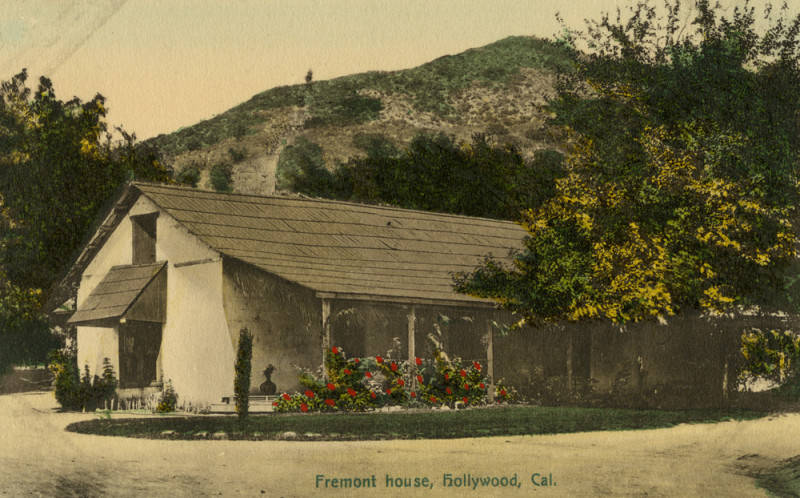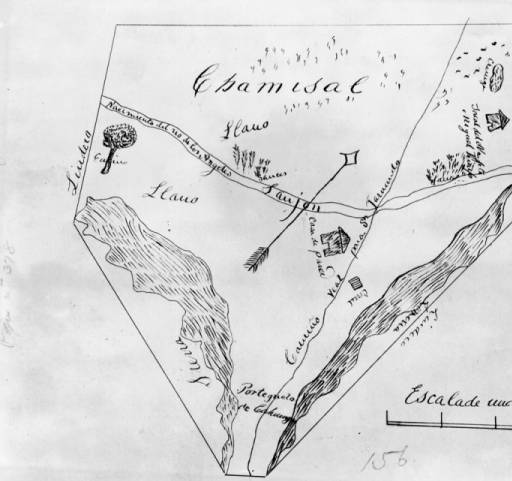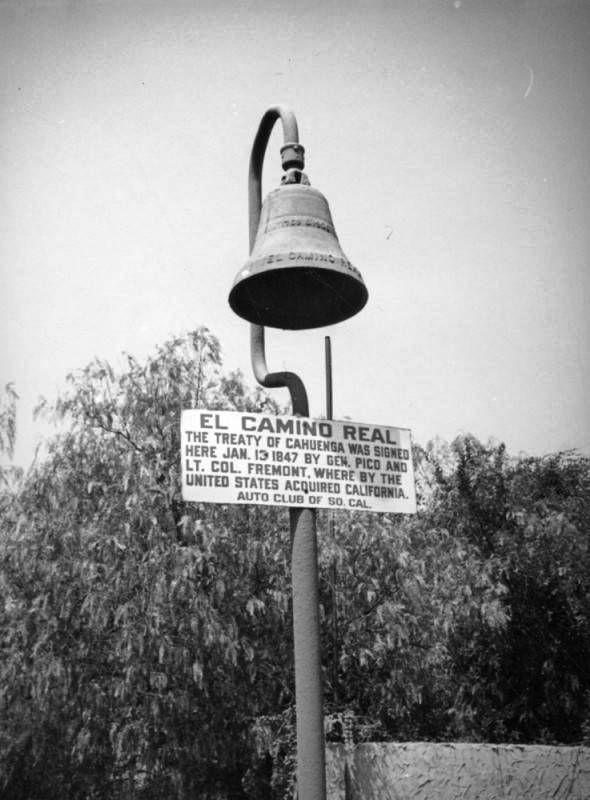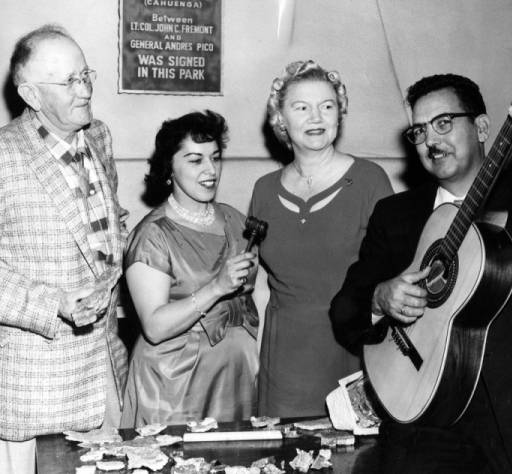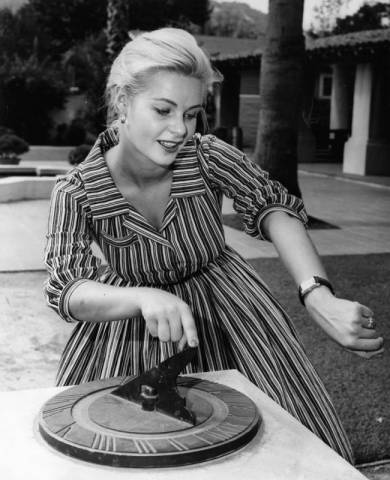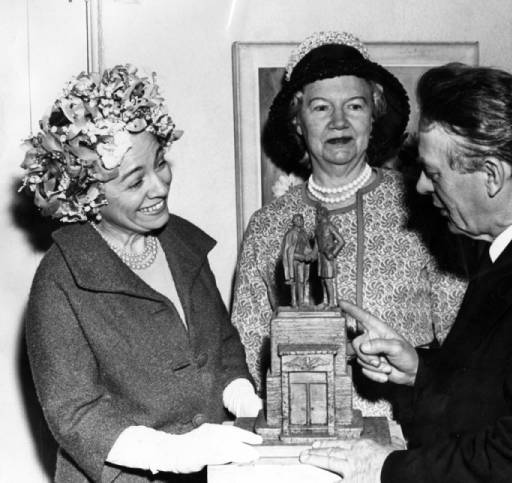This undated postcard in the Security Pacific National Bank Collection, labelled “Fremont house, Hollywood, Cal.”, purports to show the original adobe on the grounds of Campo de Cahuenga in North Hollywood, with Cahuenga Peak behind it. Security Pacific National Bank Collection, #00070855. Photographer, M. Rieder Studio.
Nestled at the juncture of North Hollywood, Studio City, and Universal City, at the north end of the Cahuenga Pass, sits a small fenced-in heritage park. Campo de Cahuenga is in the care of Los Angeles Recreation and Parks in partnership with the Campo de Cahuenga Memorial Association. It is believed to be the location of the signing of the Treaty of Cahuenga (otherwise known as the Capitulation of Cahuenga), a landmark event in the history of California. The treaty, which ended hostilities between American armed forces and the resident “Californios,” was signed 172 years ago, January 13, 1847, long enough past to make memories hazy. It effectively made the Mexican state of Alta California a military-ruled territory of the United States and, three years later, a state.
The Significance of the Treaty
Folks like to refer to the Campo as “The Birthplace of California.” However, there is much more to the tumultuous history of the Golden State. Prior to the treaty signing, the territory that is now the state of California had endured decades of shifting claims of authority: Spain until 1822, Mexico from 1822 to 1847. Russia established a short-lived colony at Fort Ross in northern California. Of even shorter duration was the California Republic in northern California, the dream of a ragtag band of American settlers with support from John C. Frémont and his soldiers. This “Bear Flag Republic” lasted 25 days in the summer of 1846. And let us not forget — for six days in 1818, the town of Monterey sat under an Argentine flag! All of these authorities ran rough-shod over the rights of the indigenous populations.
The story of the Bear Flag Republic speaks to the character of Frémont , one of the most famous men in both the history and mythology of the American West. By all accounts, Frémont was an ambitious man who saw himself as a major player in the future of California and perhaps the nation. He had burnished a reputation as an explorer, surveyor, Indian fighter, and man of destiny, specifically manifest destiny. In 1846 he was asked to bring his motley crew of mountain men, freebooters, and Native Americans into the fight for control of California.
Frémont is pictured here late in life standing next to a giant redwood tree, the so-called Frémont Tree. A legend that Frémont encouraged has it that he and a group of his men took shelter in the burned-out roots of this tree during a driving rain storm in 1846. The tree still stands in Henry Cowell Redwoods State Park in Santa Cruz County. Security Pacific National Bank Collection, #00043846, undated.
The second man in our story is Andrés Pico, the brother of Pío Pico, the last governor of Mexican-controlled Alta California. Andrés Pico led the last stand of the Californios in Los Angeles. As Frémont and his California Battalion closed in from the north, and the American military commanders Stockton and Kearny approached from the south, Pico made the decision to surrender to Frémont , expecting greater leniency from that quarter than what had been rumored to be in store for him and his men from Stockton and Kearny. Through fast-riding intermediaries the outlines of a peace plan were sketched out and an appointment made to meet at “a deserted rancho at the foot of Couenga [sic] plain.” (Edwin Bryant journal) The rancho in question was a property connected to, though some distance away from, the Mission San Fernando Rey, where Frémont and his men were encamped.
A studio portrait of Andrés Pico. Security Pacific National Bank Collection, #00043874, undated, likely 1870s.
A Woman’s Touch?
Much has been made of the story of Bernarda Ruiz de Rodriguez, a widow living in Santa Barbara when Frémont and his men trudged into that town at the very end of 1846 on their way to Los Angeles. In Frémont’s memoirs, written forty years after the fact, he mentions that a woman “of some age” (she was 42) came to him and advised him to be lenient in his dealings with the Californios he was sure to conquer.
“In the interview I found that her object was to use her influence to put an end to the war, and to do so upon such just and friendly terms of compromise as would make the peace acceptable and enduring.”
Frémont gives the lady some credit in persuading him to act graciously toward the soon-to-be vanquished. He goes on to write, “Here began the Capitulation of Couenga [sic].”
Historians and journalists have latched onto this anecdote, adding much detail both possible and decidedly unlikely: Bernarda has been credited with everything from swaying Frémont from leveling the town of Santa Barbara to personally dictating the terms of the Treaty of Cahuenga. Many versions of the story have Bernarda traveling with Frémont and his men to Los Angeles and witnessing the signing of the treaty. This writer has yet to find evidence to back up this assertion in the primary sources.
An early hand-drawn map of Campo de Cahuenga, showing the as yet unchannelized Los Angeles River, the Camino Real running diagonally from top to bottom, meadows (llanos), and a field of chamisa plants, sometimes called rabbitbush, a yellowish flowering plant which may have provided fodder for cattle. Security Pacific National Bank Collection, #00031280.
Whether or not Bernarda was present in body at the signing of the treaty document, she was there in spirit. The terms agreed upon by both sides that rainy Wednesday were quite generous to the vanquished. They were to be allowed life, liberty, and property, as well as the right to remove themselves from the territory should they wish to. They would, of course, have to forfeit their weapons and swear off further violence.
The Treaty, or Capitulation, of Cahuenga was remarkable in that it had no official sanction from the superiors of either side, yet it was generally accepted and even became the model upon which the Treaty of Guadalupe Hidalgo, the pact that officially ended the wider Mexican-American War in 1848, was based.
The Significance of the Campo
Campo de Cahuenga is one of the lesser-known landmarks in the Los Angeles basin. Nonetheless the site offers a wealth of historical and archaeological significance. What was an abandoned structure at the time of the treaty signing continued to weather away until it was completely demolished in the 19-teens to make way for Universal City. It has been the site of a number of archaeological excavations, beginning with the efforts of a group of high school students in 1931 who uncovered a portion of foundations and some floor and roof tiles, enough to establish a rough approximation of the forgotten adobe and to qualify it for landmark designation by the State of California in 1935. A few years later the City of Los Angeles built a replica structure on what they believed was the footprint of the adobe. This structure and surrounding gardens were made available for use by the community.
This photo from 1928 shows the city-built walls surrounding a small memorial park. The original adobe structure of the Campo was long gone at this time, but a new structure was built about 1950 to serve in its stead. Security Pacific National Bank Collection, #00032431.
Sixty years later progress on a Los Angeles Metro project was halted when digging uncovered additional flooring materials under the street and sidewalk outside the new Campo gates along Lankershim Boulevard. Professional preservation practices were called into play resulting in the excavation of the original footprint of the adobe running crosswise to the re-imagined structure. These efforts uncovered artifacts of both Native American and Mexican/Californio origin.
Today, while the original foundations have been re-buried, one may see the outlines of the adobe walls adjacent to the reconstructed building and extending out onto the boulevard! An iconic bell-shaped markers identifies the spot as a location on El Camino Real, the original dusty road that connected the California missions and their growing communities.
Mrs. A.S.C. Forbes, the “Mother of the Campo.” Mrs. Forbes was a well-known advocate of preservation of California mission-era structures. She is credited with tracing the route of El Camino Real, the road that linked the California missions. She is sometimes known as the “Bell Lady” for designing and installing antique-looking bells along the route of the Camino, including at the Campo de Cahuenga. Her influence is credited for preservation and interpretation of the Campo site. Security Pacific National Bank Collection, #00043839, undated.
One of the famous El Camino Real bells, designed by Mrs. Forbes, marks the site of Campo de Cahuenga. Herman J. Schultheis Collection, #00010012, c. 1937.
A Place for All
Although not well known to the general public, Campo de Cahuenga has been popular with a number of civic and heritage-minded groups in the San Fernando Valley area. A sampling of photos from the Los Angeles Public Library gives us a peek at the many happenings that have taken place at the Campo over the decades.
For many decades, the Campo de Cahuenga Memorial Association has held an annual re-enactment of the treaty signing at the adobe. Here James M. Sutton, left, of the Los Angeles Parks Department, and Geoge E. Shipley of the Memorial Association dust off the plaque on the in preparation for the event in 1963. Valley Times Collection, #00114275. Photographer, Bob Martin.
The Pan-American Friendship Club, North Hollywood chapter, celebrates Mexican Independence Day in 1957. The man standing at left is a representative of a Mexican airline, probably Mexicana. Valley Times Collection, #00124747.
A meeting of the San Fernando Valley Historical Society takes place at Campo de Cahuenga in 1959 with musical entertainment by Rudolph M. Garza. A plaque commemorating the treaty signing can be seen on the wall. Valley Times Collection, #00133101. Photographer, William H. Wilde.
The Daughters of the American Revolution, Peyton Randolph chapter, learn to duck and cover from Major William Koons, an Armed Forces Information Officer. The news article accompanying the photo was entitled “Learns atomic test lore.” Valley Times Collection, #00141406, 1957.
Ingrid Goude, a 19-year old starlet from Sweden, demonstrates how to re-set your sundial for the end of daylight savings time, September 29, 1956. Ms. Goude went on to find fame, of a sort, as the star of “The Killer Shrews” in 1959. Valley Times Collection, #00143191.
The Kappa Delta Sorority Alumnae Association, San Fernando Valley chapter, held Easter egg hunts at the Campo during the 1950s. This photo appears to be staged for publicity of the event which was to be the next day. Valley Times Collection, #00142142, 1955. Photographer, Dave Siddon.
Sculptor Henry Van Wolf presents a scale model of a proposed sculpture commemorating the Cahuenga Treaty signing to women representing the San Fernando Valley Historical Society and the North Hollywood Women’s Club. Van Wolf offered to create a full-scale monument for display at the Campo at his cost. It does not appear that the work was ever carried out. Efforts to interest the federal government in a national park at the site foundered. Valley Times Collection, #00133104, April 3, 1965. Photographer, Gordon Dean.
Sources consulted for this essay include Memoirs of My Life and Times by John C. Frémont (1887); What I saw in California, the journal of Edwin Bryant (1848); The Private Journal of Louis McLane, U.S.N., 1844-48; Bear Flag Rising by Dale L. Walker (1999); Old Spanish Santa Barbara, From Cabrillo to Frémont by Walker A. Tompkins (1967); “Doña Bernarda Ruiz de Rodriguez, Santa Barbara’s Forgotten Heroine” by William G. Lockwood, in Ancestors West: Santa Barbara County Genealogical Society, Fall 2009/Winter 2019; “San Juan to Cahuenga: The Experiences of Frémont’s Battalion” by William H. Ellison in the Pacific Historical Review, August 1958; “When the System Works, The Campo de Cahuenga,” by Roberta S. Greenwood, in the Pacific Coast Archaeological Society Quarterly, Spring and Summer 2002; the website CampodeCahuenga.com;


